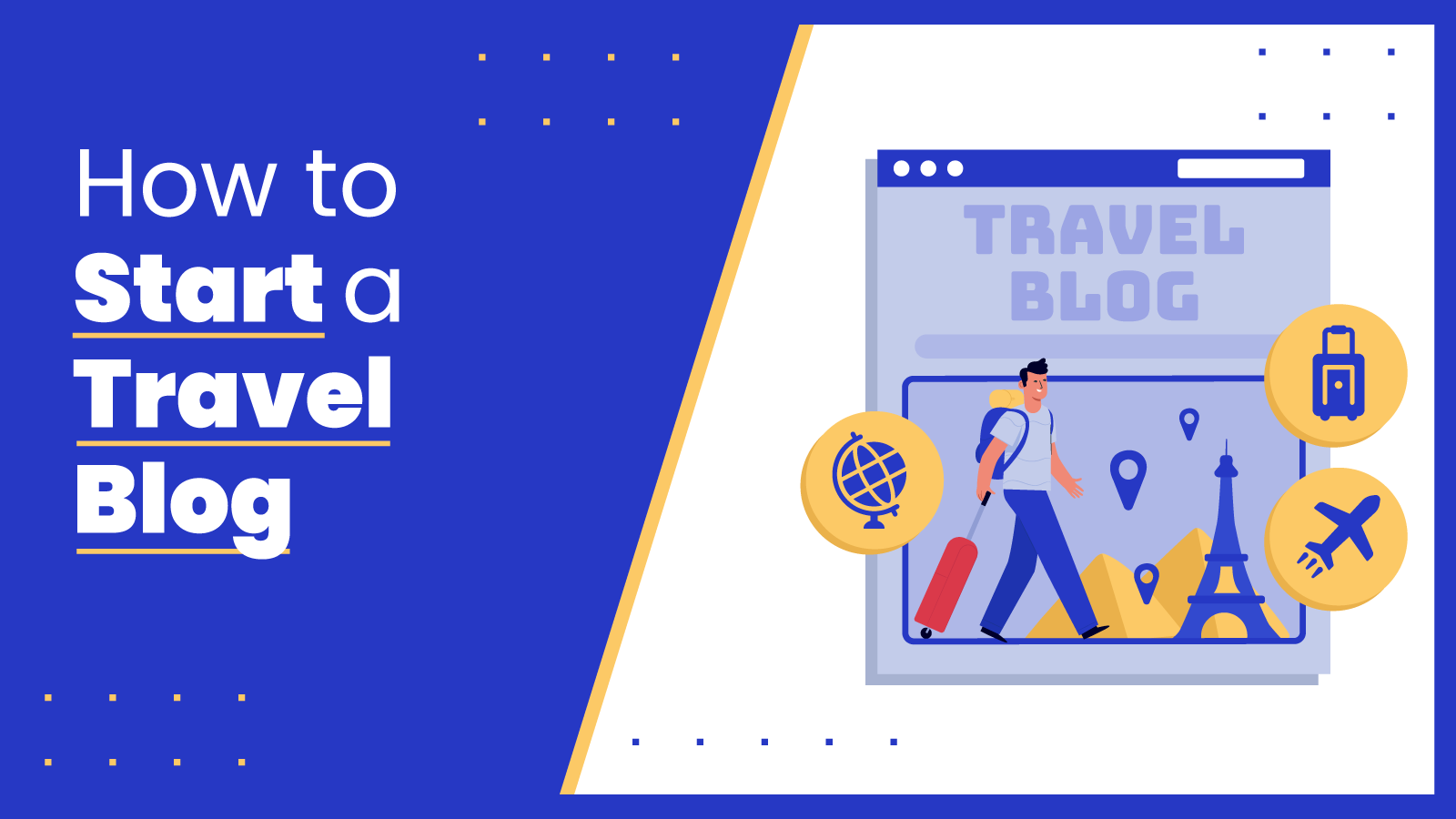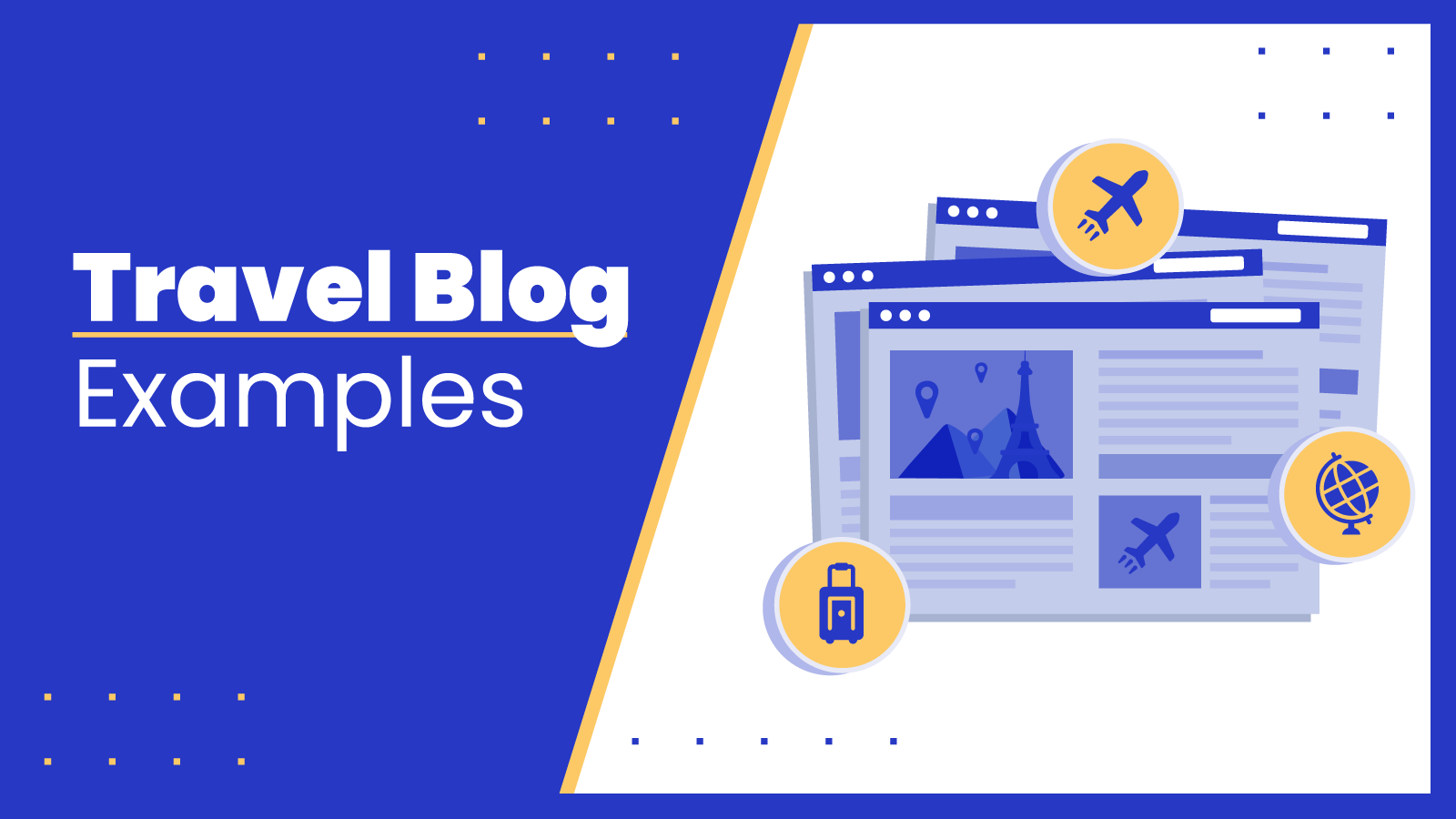Starting a lifestyle blog can be both fun and profitable.
From travel and beauty to everyday life, these blogs open doors to exciting worlds and hefty incomes.
Here at Authority Hacker, we’ve seen it all – from building our own successful websites to helping 14,000+ students achieve the same – including many who started lifestyle blogs.
We’ve also earned a lot from our own blogs – here’s a small sample of our blogging revenue:

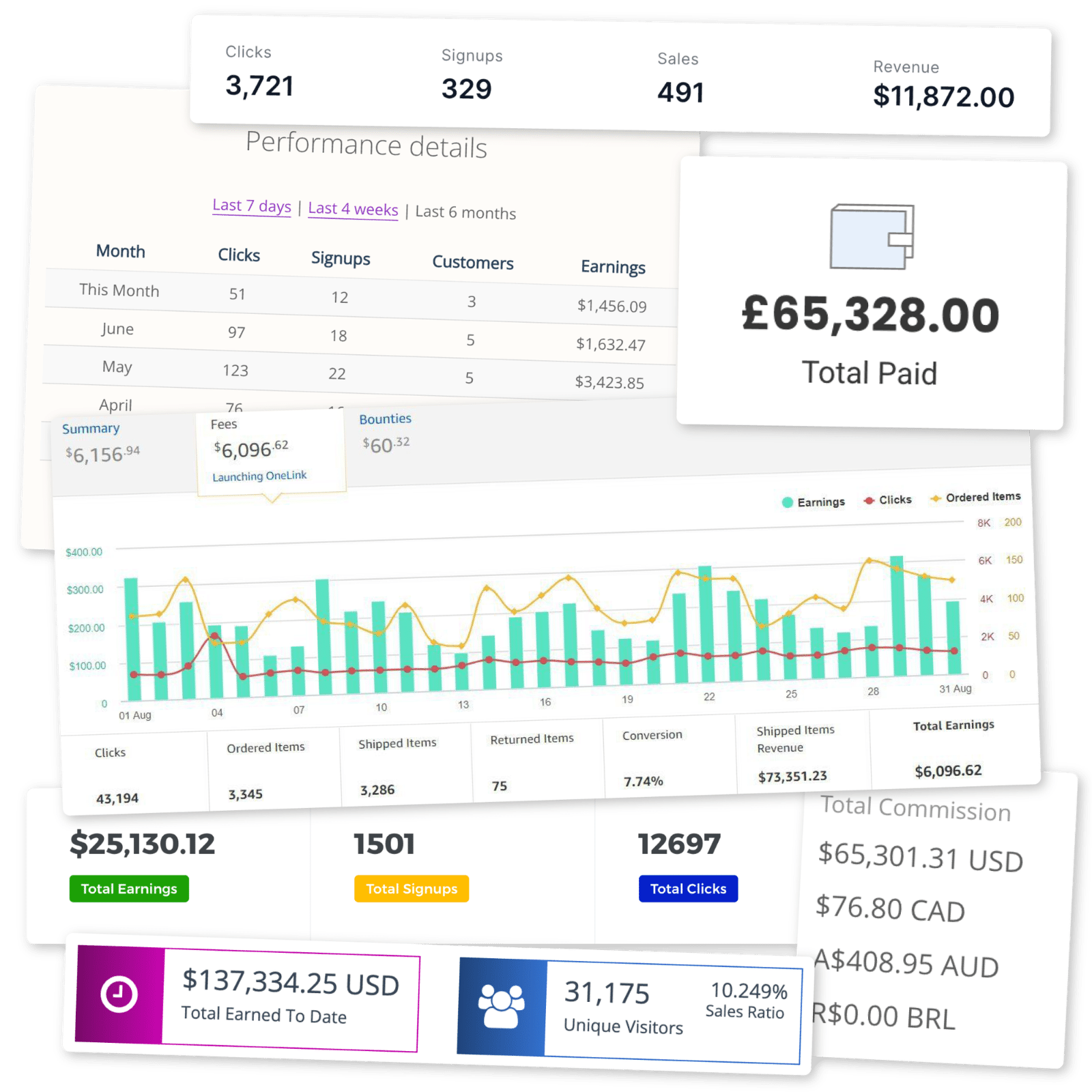
This 10-step guide to starting a lifestyle blog will teach you how to follow in their footsteps.
Why Start a Lifestyle Blog?
If you’re passionate about travel, beauty, fashion, or any other facet of life, starting a lifestyle blog can be very rewarding.
First, let’s talk money. Lifestyle blogging can bring in a significant income.
Our affiliate marketing statistics show a range of average monthly incomes among lifestyle blogs depending on sub-niche.
On the lower end, affiliate marketers in the parenting and family niche earn around $1,145 per month. The highest incomes are in the travel and beauty niches, earning $13,847 and $12,475, respectively.
As a lifestyle blogger, you’re also connected with a community that shares your interests. Whether it’s fitness, parenting, or personal development, you can bond with others who relate to your experiences.
Starting a lifestyle blog also allows you to share your passion with the world. It’s a great way to document your journey, inspiring and encouraging others along the way.
Examples of Successful Lifestyle Blogs
Before you start a lifestyle blog, it’s best to study what other lifestyle bloggers are doing to see what a successful lifestyle blog looks like.
Here are a few lifestyle blog examples showing the potential for success in this diverse niche.

CupofJo
Cup of Jo provides daily doses of style, design, and cultural exploration. The site prioritizes human connections, offering relationship wisdom and expert parenting tips.

Corporette
Corporette is a trusted source for professional elegance. Crafted for modern, empowered women, it offers fashion, beauty, and makeup insights.
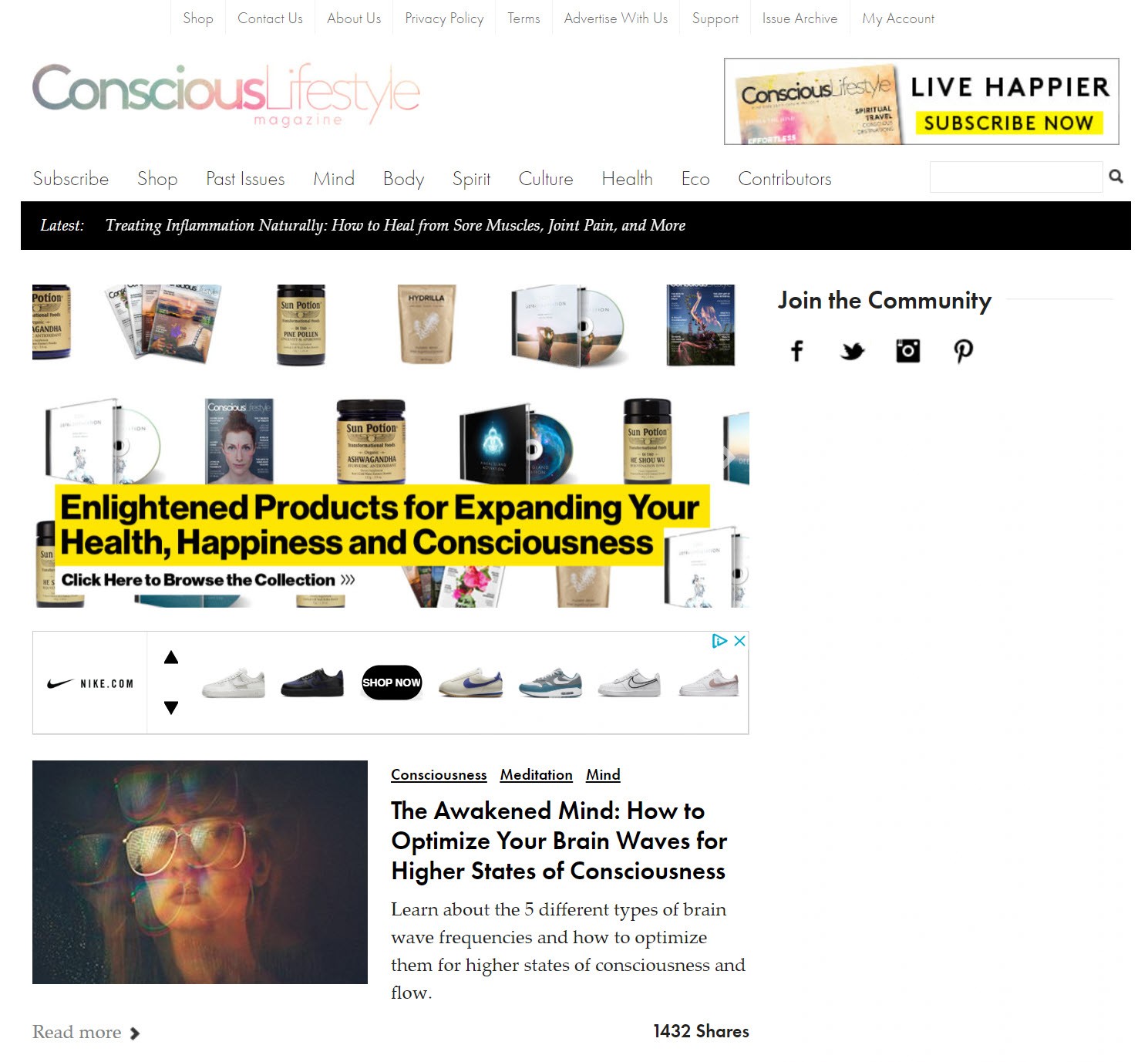
Conscious Lifestyle Magazine
Conscious Lifestyle Magazine covers self-improvement and holistic wellness topics. Expert contributors guide journeys in mindfulness, meditation, arts, culture, and more.
How To Start a Lifestyle Blog in 10 Steps
Ready to learn how to start a lifestyle blog? Here’s a step-by-step guide to ensure a smooth start.
1 Narrow Down Your Lifestyle Niche
The first critical step in starting your own lifestyle blog is to narrow down your niche.
Lifestyle blogging is a diverse world. Unlike other bloggers, lifestyle bloggers have more freedom to explore a wide range of topics and sub-niches.
It’s crucial to narrow down your lifestyle blog niche to focus your content and target a specific audience. This allows you to build expertise, establish credibility, and attract a dedicated following.
Here’s a list of popular lifestyle sub-niches to consider:
- Fashion: Discuss style, clothing, and fashion trends for a specific demographic.
- Parenting: Offer insights, tips, and experiences related to parenthood.
- Fitness: Explore health, wellness, workouts, and nutrition.
- Personal Development: Offer guidance on self-improvement and personal growth.
- Travel: Share your adventures, tips, and recommendations for globetrotters and wanderlust enthusiasts.
- Food/Cooking: Share your passion for food, cooking techniques, recipes, or dining experiences.
- Interior Design: Focus on creating beautiful and functional living spaces.
Before you make your decision, it’s a smart idea to qualify your niche ideas for traffic. This helps you see their potential to attract readers and succeed.
You can easily do this using the following strategies:
Make a list of the best lifestyle blogs in each potential niche. Use blog aggregator platforms – like the fashion category of Detailed – or Google potential keywords. You can also input a website into the “Organic Competitors” tool on Ahrefs to find similar sites.
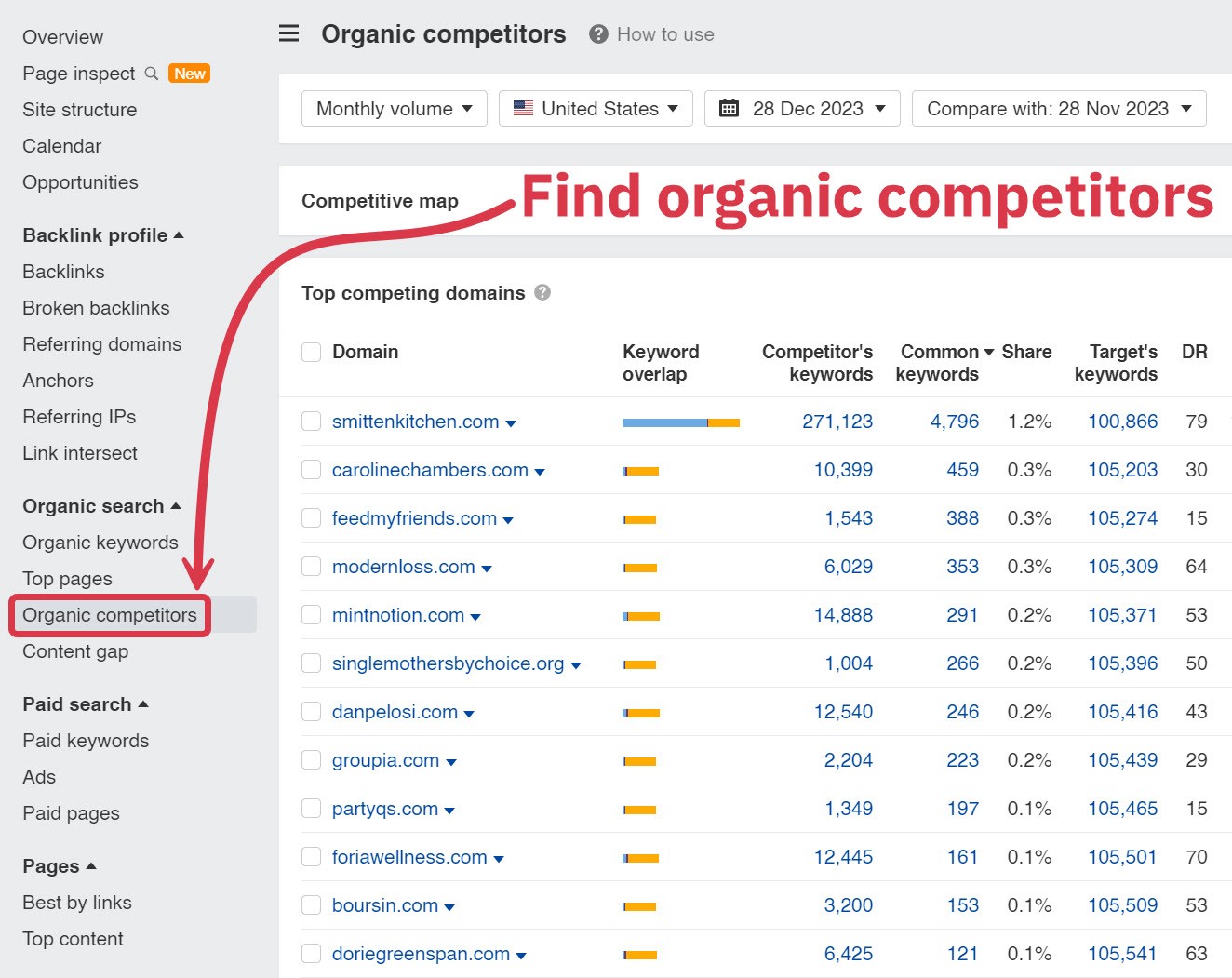
Analyze Traffic Levels. Use tools like SE Ranking to analyze the traffic levels of existing blogs in a sub-niche.
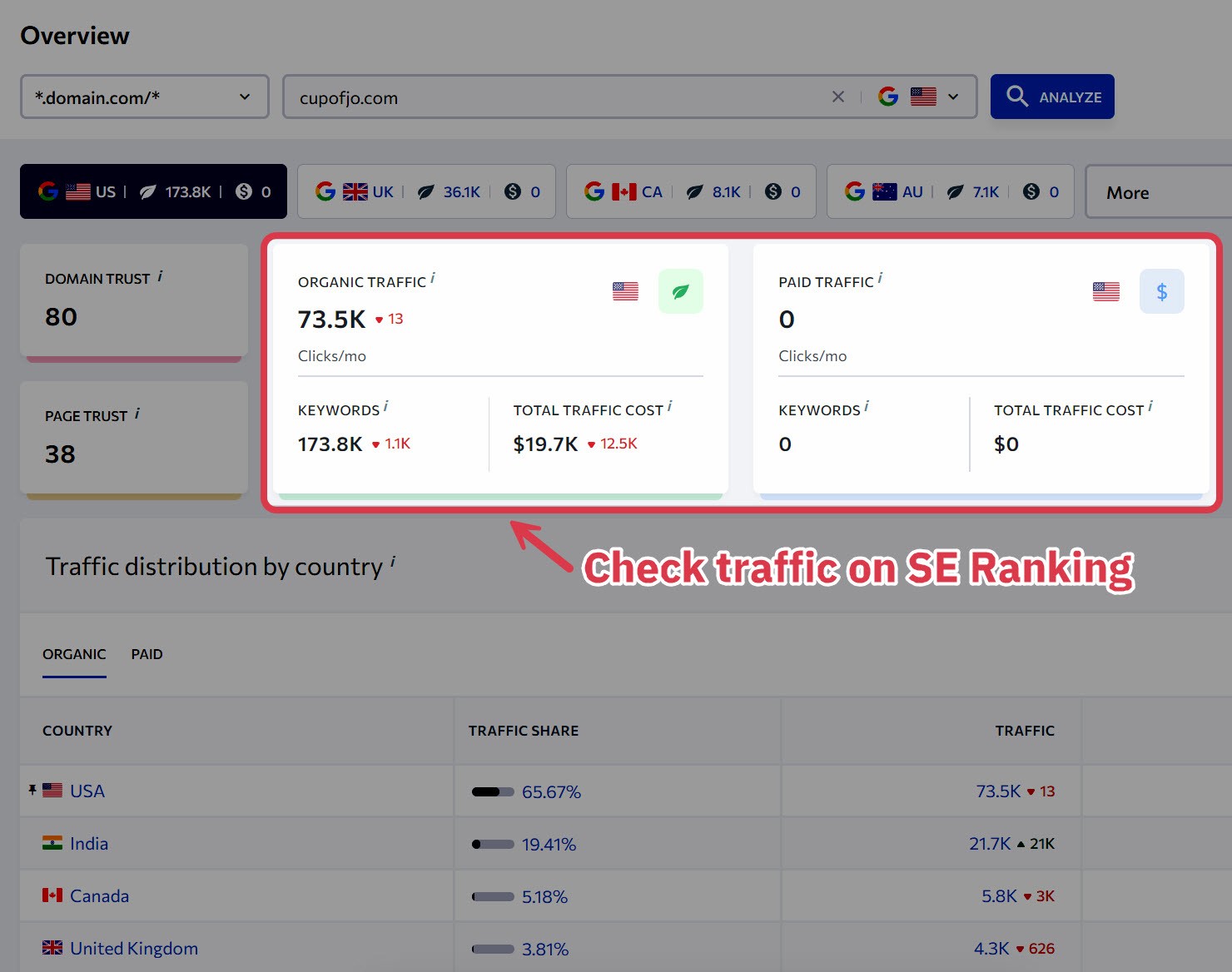
Compare Sub-Niches with Google Trends. Use Google Trends to compare the popularity and interest between sub-niches over time.
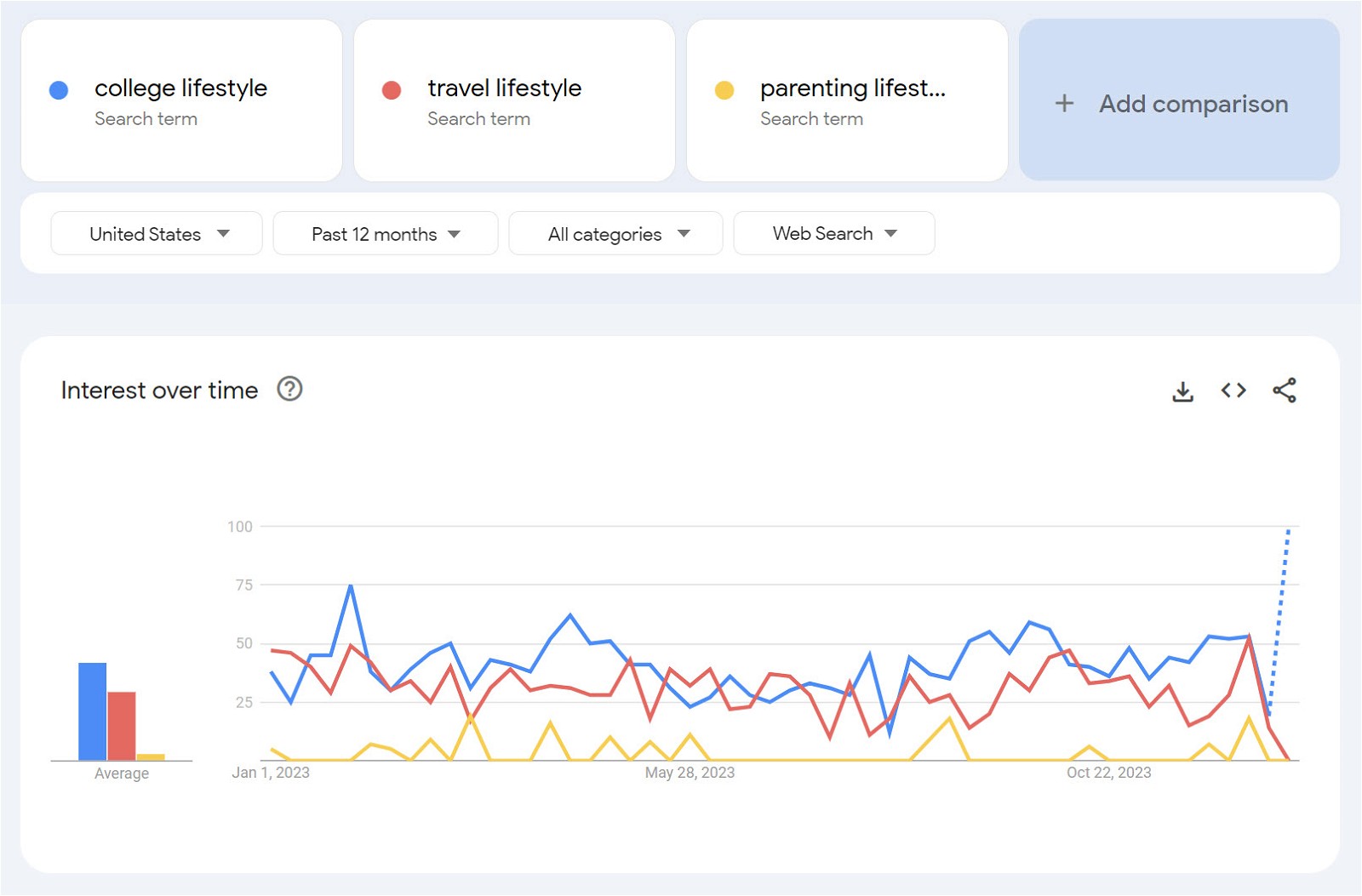
For additional guidance on picking the perfect niche, watch our YouTube video of expert tips for niche selection:
Don’t get too caught up searching for the perfect lifestyle blog niche. If it passes the viability test, proceed with setting up your blog. You can evolve and expand your lifestyle blog topics as you progress.
2 Choose a Blogging Platform
The next step in launching your own blog is selecting the right blogging platform.
A blogging platform is the software enabling your blog’s online presence. It’s where you create, publish, and manage your content.
There are free blogging platforms, like Medium or Blogger, that offer a quick start. Unfortunately, they do very little to help you grow your lifestyle blog.
The smart choice for the serious lifestyle blogger is to build a website. Here’s why:
- Full Control. You have complete control over your blog’s design, functionality, and content.
- Security. No one can shut down your blog, ensuring your content can’t be deleted.
- Diversified Blog Traffic. You can establish an email list to diversify your blog traffic sources. This helps safeguard your blog traffic from algorithm changes.
- Monetization Potential. It’s easier to make money blogging with affiliate products and display ads.
- Marketing Freedom. You can leverage search engine optimization (SEO) and social media to attract and engage your audience.
To begin your blogging journey on the right foot, we recommend WordPress.org (not WordPress.com). It’s free and offers powerful features and complete control to start a lifestyle blog you’re proud of.

While WordPress.org is the best option, it’s not the only available platform. You can explore the alternatives in our guide to the best blogging platforms.
3 Choose Your Domain Name
It’s time to select a domain name for your lifestyle blog.
Your domain name is your blog’s digital address. It includes your blog name and a domain name extension (like “.com”).

It’s important to select an attention-grabbing domain name. As the foundation of your blog’s identity, a memorable and catchy blog name can make all the difference between a successful blog and an unknown blog.
When picking your domain name, keep these six tips in mind:
- Keep it short and memorable. Aim for a domain name between 6-14 characters.
- Keep it simple. Avoid hyphens, numbers, and consecutive letters.
- Make it catchy. Explore alliteration, rhymes, assonance, and consonance to create a name that resonates.
- Align with Your sub-niche. Choose a name that reflects the essence of your chosen lifestyle niche.
- Avoid trademarks. Use a trademark search tool to ensure you don’t infringe on registered trademarks.
- Prioritize .com domains. The .com extension carries trust, familiarity, and memorability.
Coming up with the ideal domain name can be challenging. If you’re having trouble, I recommend using an AI domain generator like Brandsnap to help you find a name that stands out from other blogs.
Once you’ve chosen a domain name, you need to register it. We recommend using Namecheap for domain registration. Typically, a .com domain extension through them costs around $10 per year.
If you find a great name, but the .com extension isn’t available, read our guide to popular .com alternatives.
4 Buy Web Hosting
You can’t start a lifestyle blog without finding a reliable web hosting solution.
A web host provides the necessary tools and infrastructure to store and maintain your website on a server. Without web hosting, internet users can’t access your blog.
Bluehost is often recommended for its affordability. However, we recommend Siteground. It offers even better value for only ~$1 more, making it an excellent option for newbie lifestyle bloggers.
Here’s a step-by-step guide to set up web hosting using Siteground:
Step 1: Start by visiting the Siteground WordPress hosting page.
Step 2: Choose the “StartUp” plan. It’s the most affordable option and more than enough for launching a new WordPress blog.
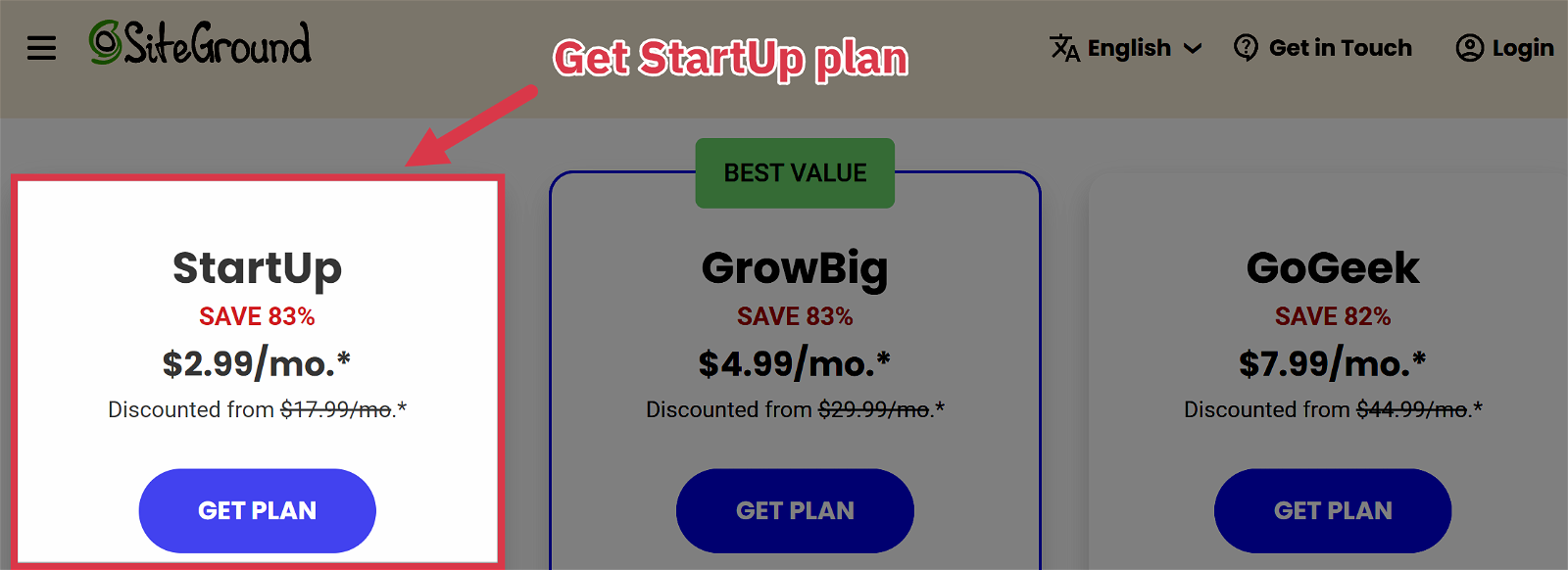
Note: SiteGround offers a discounted price for new customers. The rebill is at the standard rate after the first year.
Step 3: Select “I already have a domain” and enter your domain name into the provided field.
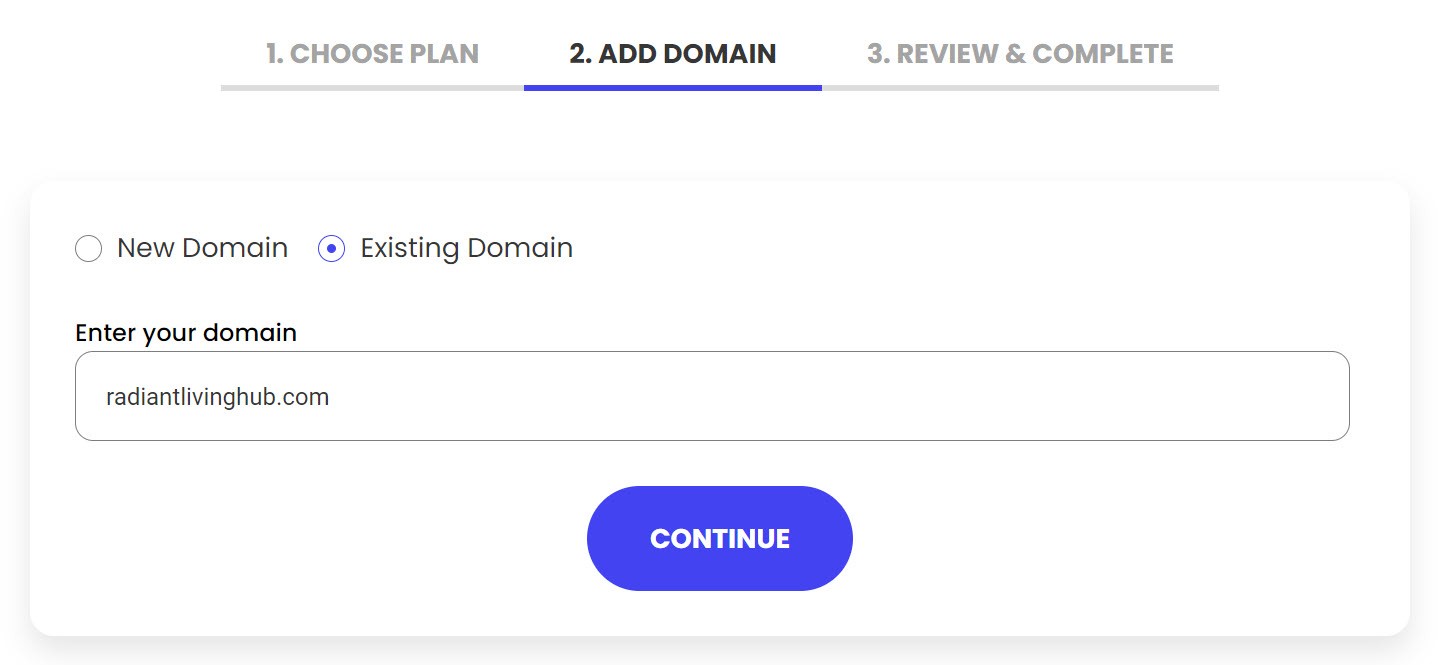
Step 4: Fill in account information and location details.

Step 5: Add payment info and select your preferred subscription period. Typically, the 12-month plan offers the best value.

Step 6: You can skip any promotional extra services offered, as they are unnecessary for a new blog.
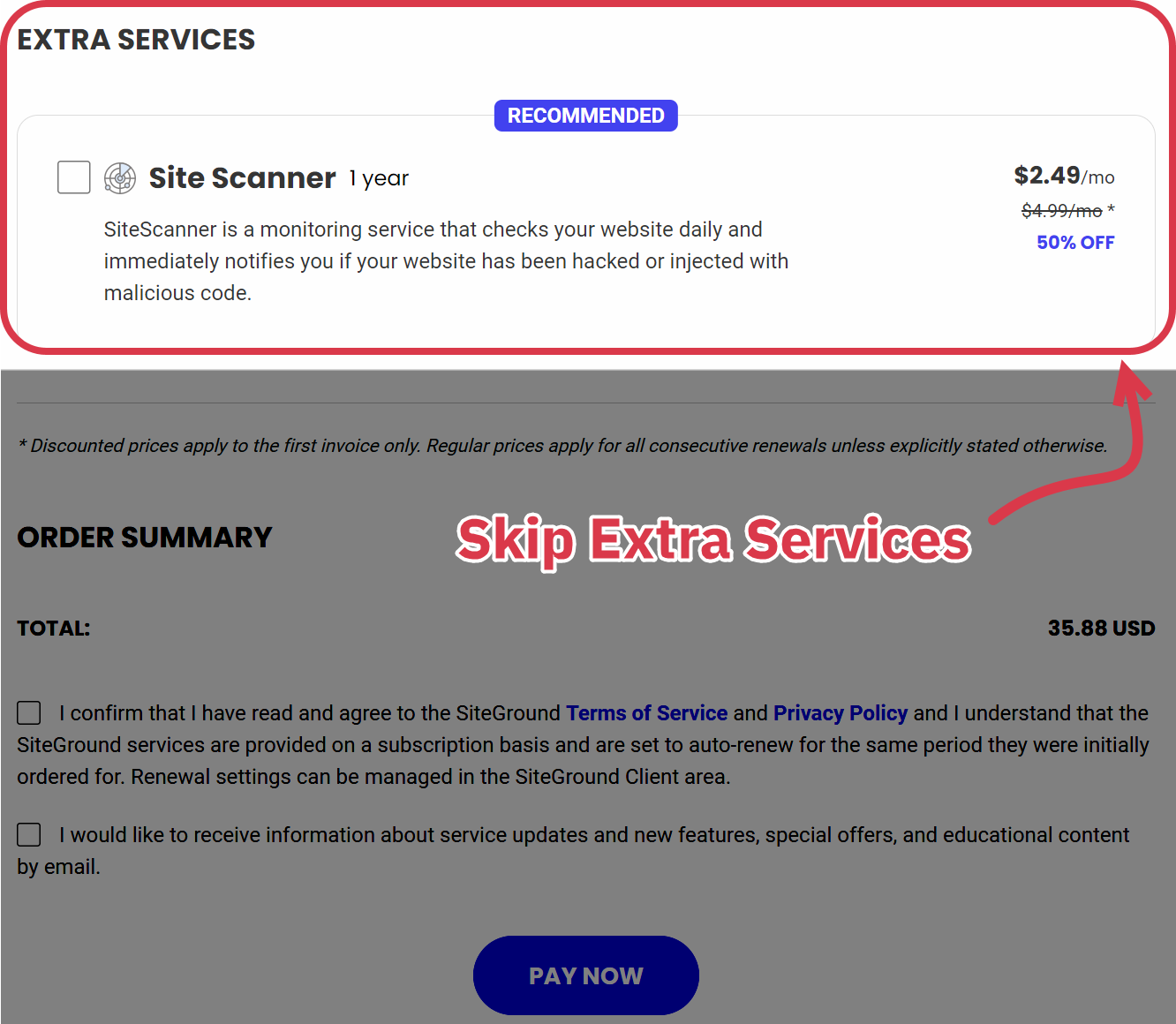
Step 7: Point your Namecheap domain name to your new Siteground server. You can follow this guide or contact Siteground’s support team for assistance.
That’s it! Your WordPress site is now associated with your chosen domain name and hosted on the Siteground server. Next, I’ll guide you through how to design your website and create content for it.
5 Choose a Theme for Your Lifestyle Blog
The next step is selecting a WordPress theme for your site.
A theme is a framework that defines your site’s structure and appearance and is an important element of your blog’s identity.
Your chosen theme should align with the overall tone you want for your website and brand.
For instance, if you’re a wellness lifestyle blogger, you should prioritize a clean and minimalistic layout to reflect the serenity and simplicity of wellness.

We’ll discuss fine-tuning your website’s design in the next section. For now, you just need to choose a theme that allows you to customize your blog’s look and feel.
You can find many free themes available that are suitable for beginners, but they often come with limitations.
We recommend opting for a free WordPress theme with a premium upgrade option.
Our top three recommended WordPress themes are GeneratePress, Astra, and Kadence. These themes are all easy to use and offer free versions with premium upgrades:

Most extensive template library. Speed and user-friendly design make it excellent for beginners.
Get Astra
User-friendly, fast, and features a useful drag-and-drop builder for headers and footers.
Get Kadence
Lightweight theme with excellent customizability along with Generateblocks.
Get GeneratePressIf you want to expand your search beyond our recommendations, consider these tips when evaluating a theme:
- A fast-loading theme is crucial for a smooth user experience.
- Opt for WordPress themes created by reputable developers with positive reviews.
- Your theme should be responsive on mobile devices.
- Ensure the theme is easily customizable to match your vision.
- Choose a theme with strong support for assistance when needed.
Once you’ve picked a theme, you can install it in four simple steps:
Step 1: Access your WordPress dashboard.
Step 2: In the left sidebar, select “Appearance” and then “Themes.”
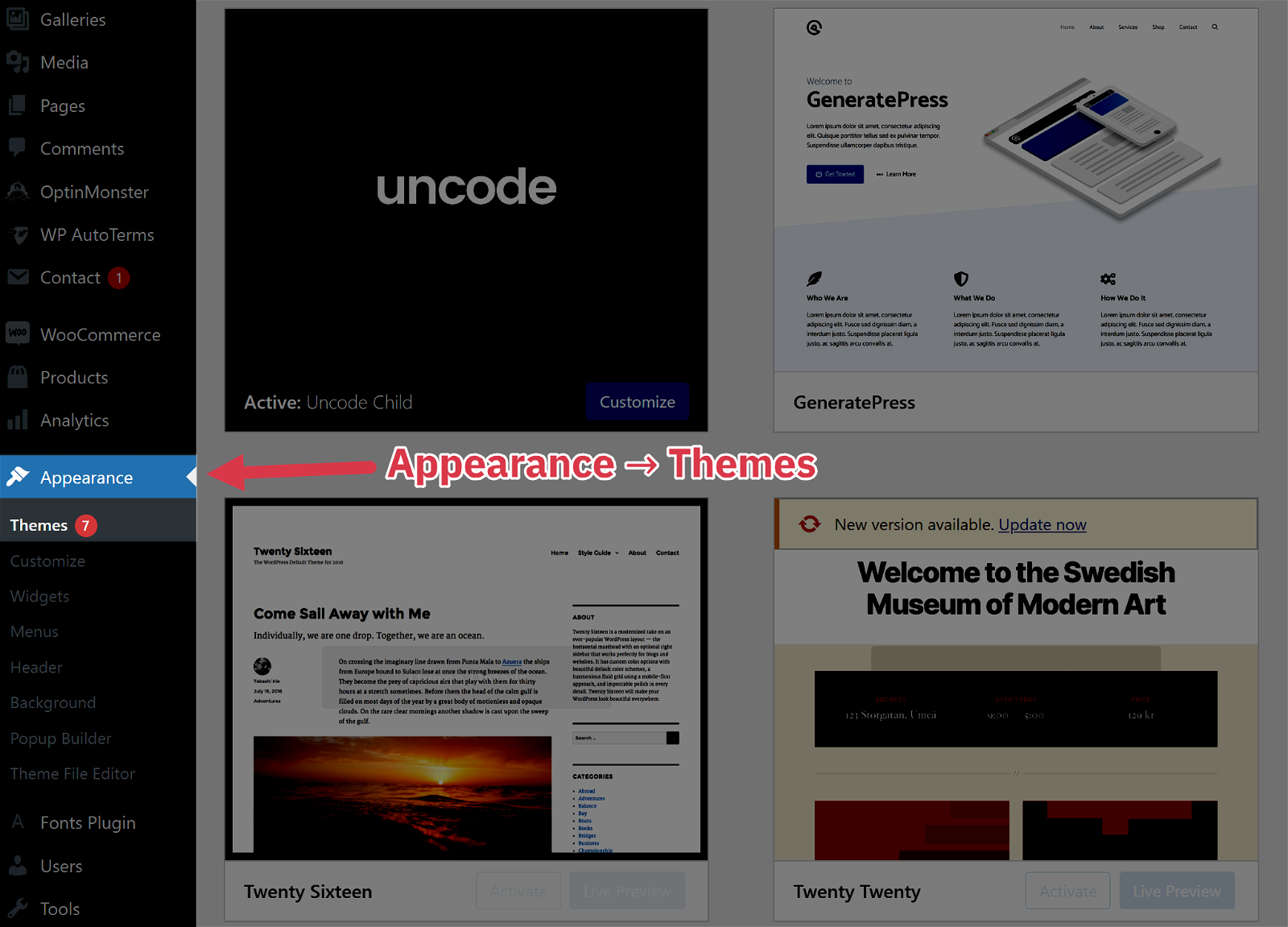
Step 3: Click on “Add New.”
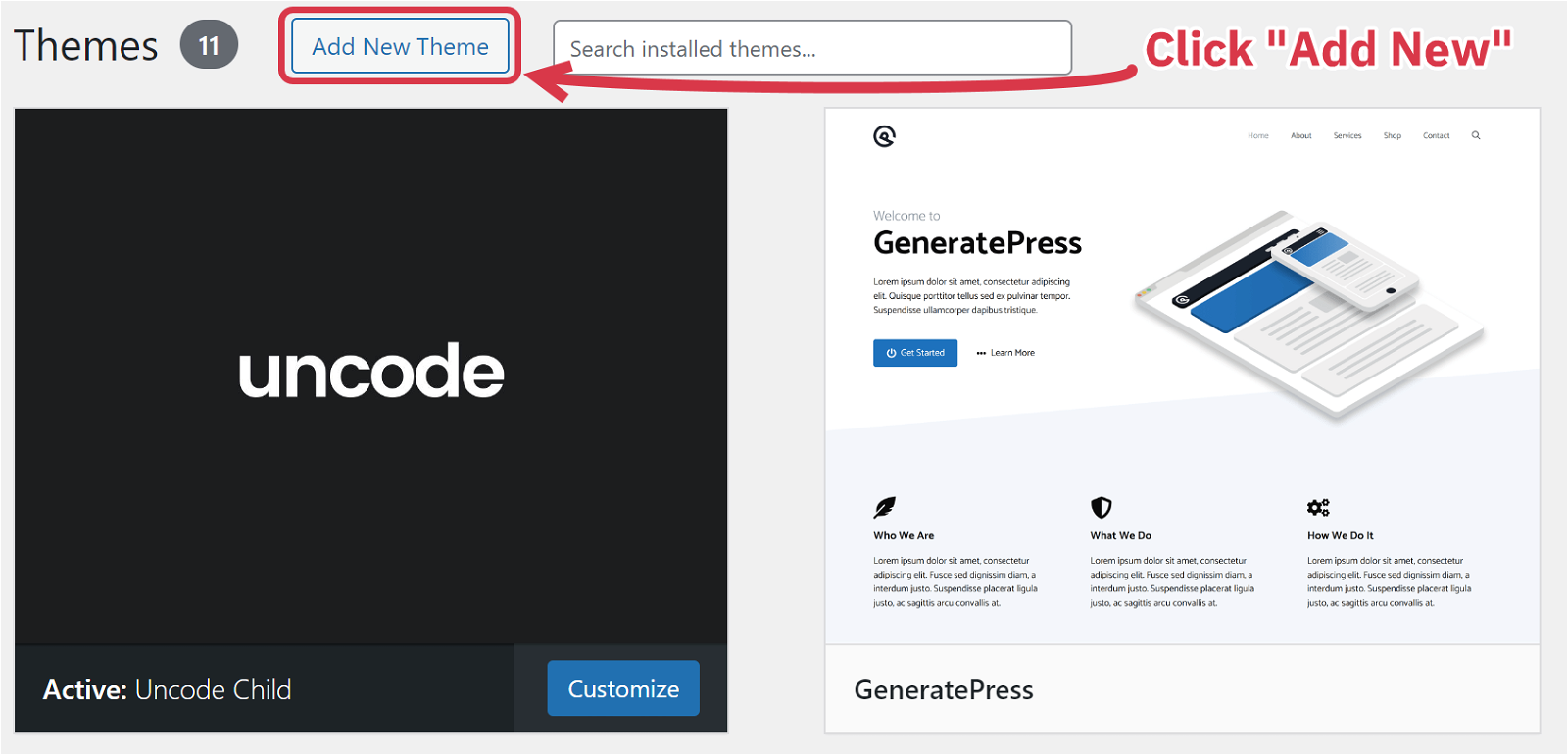
Step 4: Search for your WordPress theme and click “Activate.”
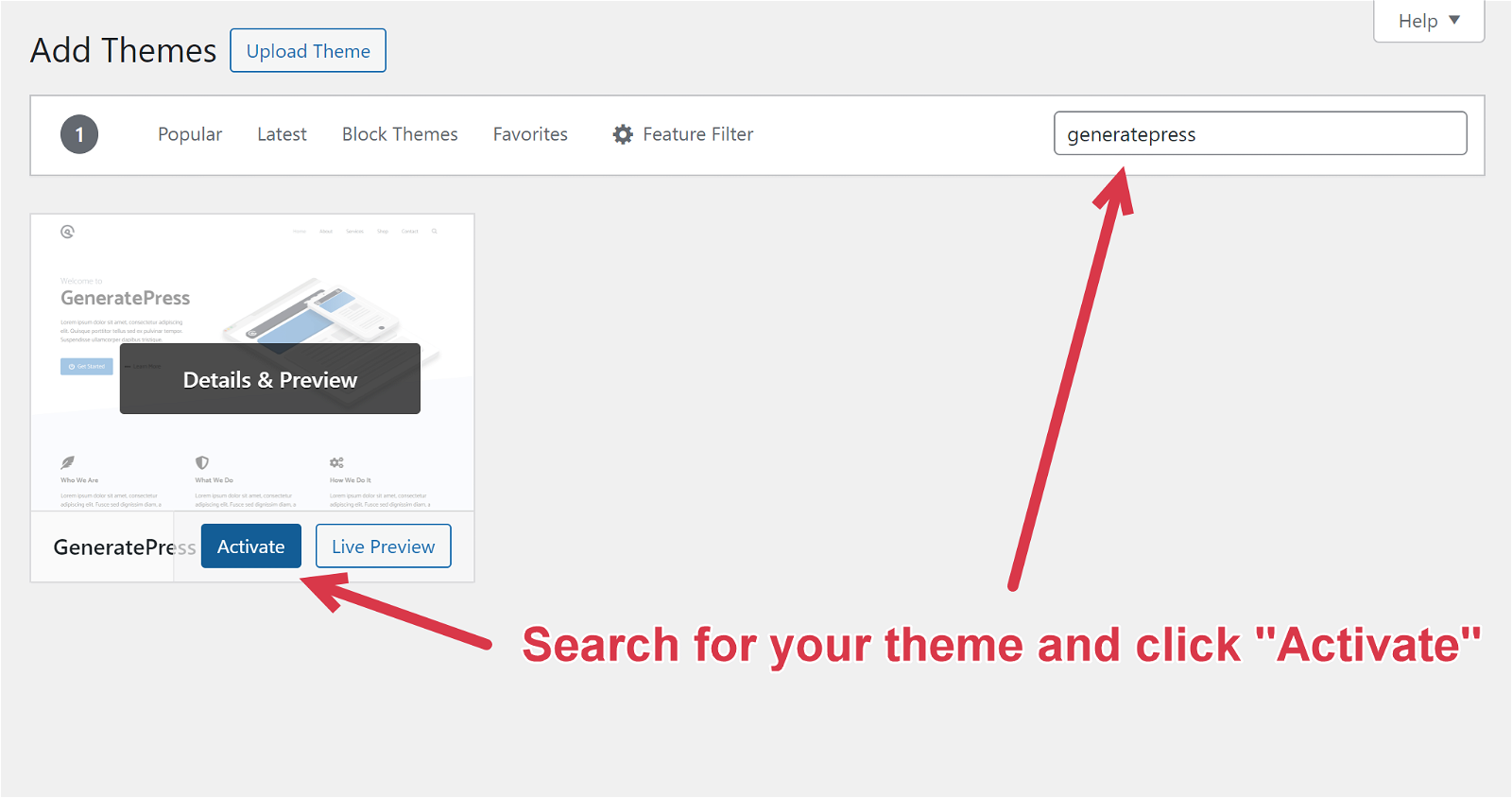
With your WordPress theme activated, you can begin customizing your blog to give it a unique and personal touch.
6 Decide on Design & Branding
Now, it’s time to put your signature on your website through design and branding. These elements will make your lifestyle blog visually distinctive and memorable.
While there are many design elements to consider, we’re going to focus on two of the most crucial components – color and logo.
A cohesive color palette helps define your blog’s personality. It should evoke specific emotions and create an appealing visual experience.
For example, a good fashion lifestyle blog design might be chic, sophisticated, and versatile.
In that case, you’d want to consider a palette that includes classic neutrals like black, white, or grey, complemented by one or two accent colors that add a pop of style and energy. These could be bold shades like red or royal blue, or softer tones like blush pink or mint green, depending on the specific fashion niche you’re targeting.
I recommend using Coolors to choose your colors. This handy tool makes it easy to select harmonious color combinations.
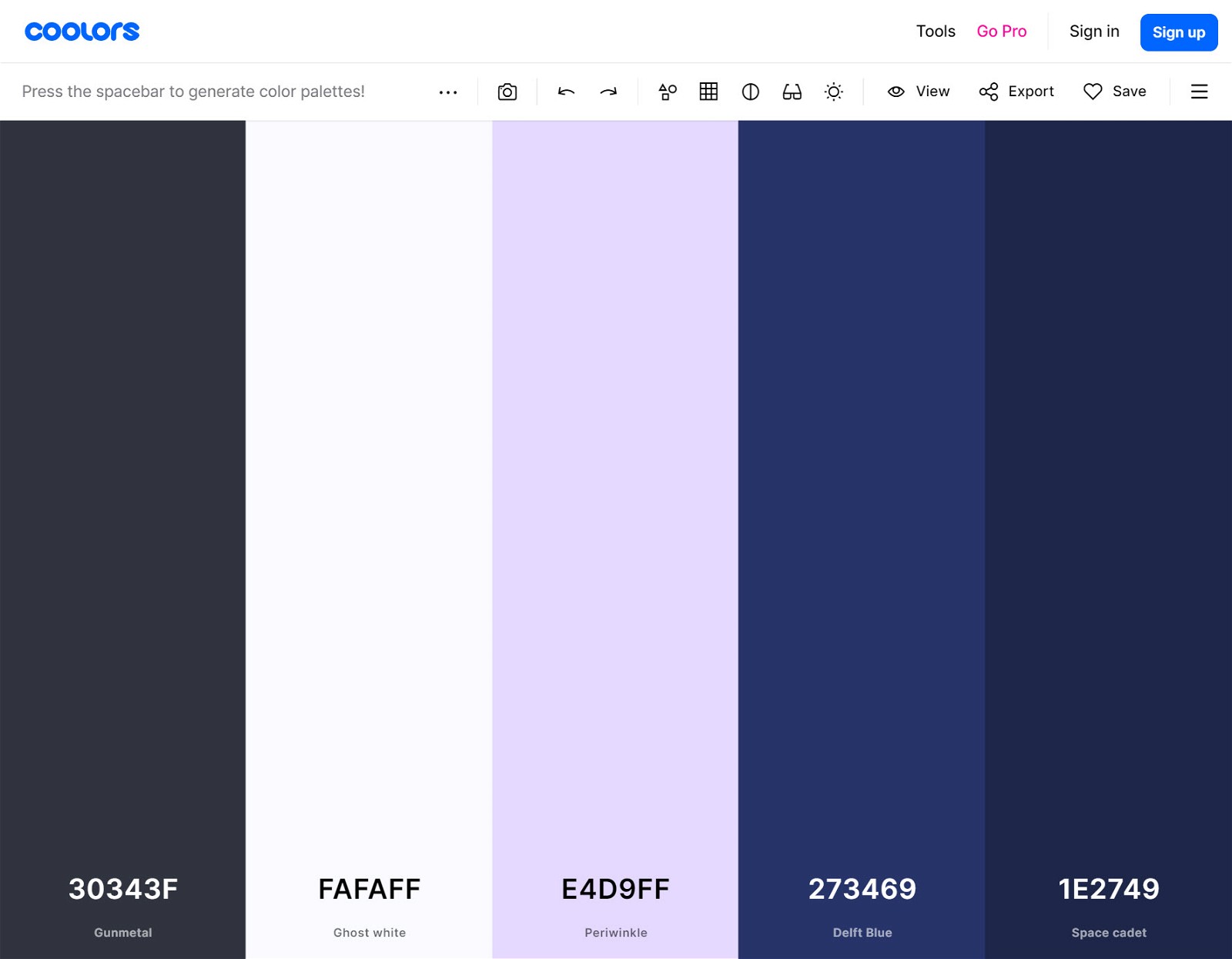
After choosing your color scheme, it’s time to make the logo.
A memorable logo is another key element of your blog’s branding. As the visual representation of your lifestyle blog, it can leave a lasting impression on your audience. A well-designed logo should immediately convey your blog’s niche and personality.
To craft your logo, I recommend using Canva. This popular design tool offers a wide variety of pleasing logo templates for any niche.
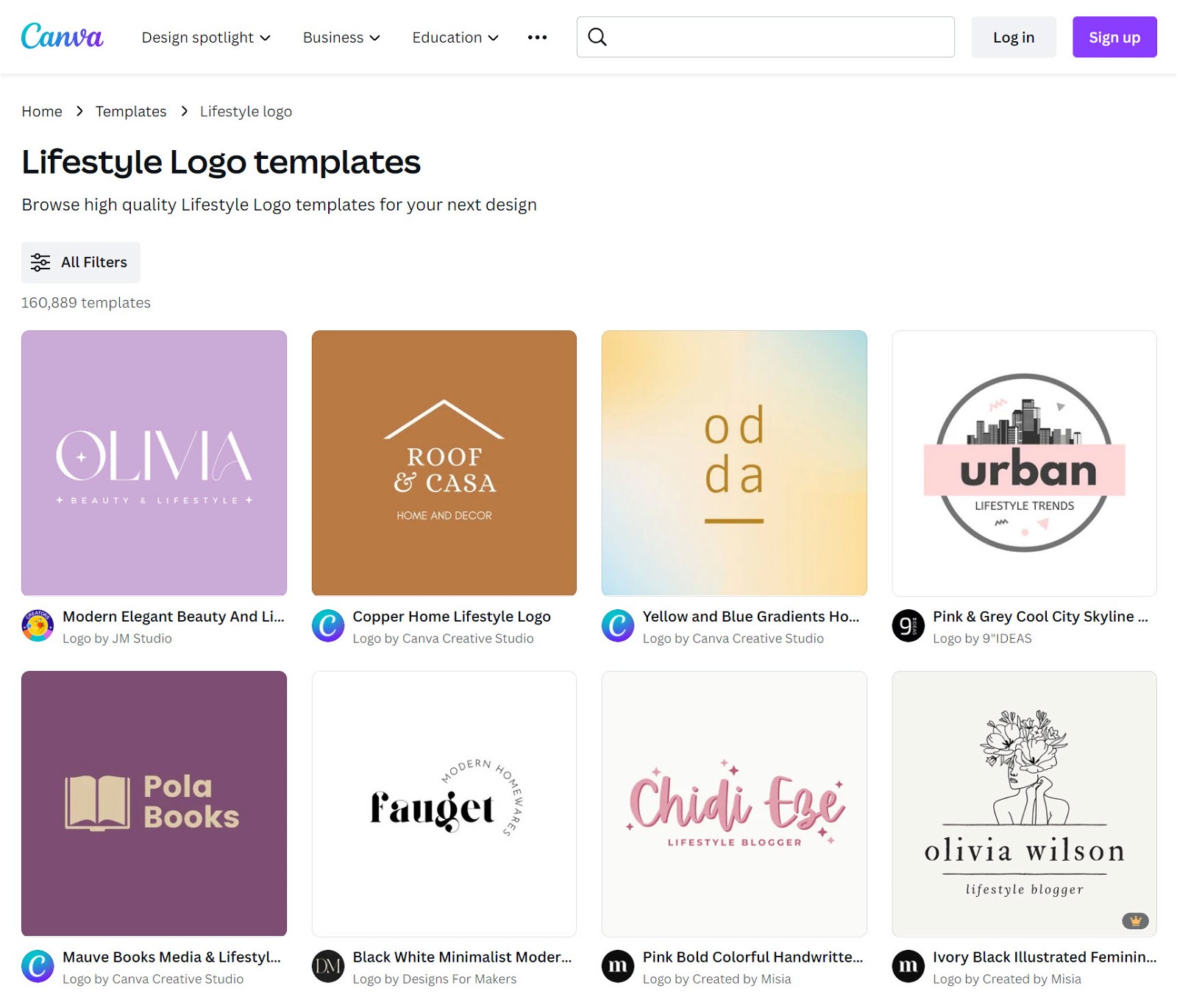
Start by searching for a logo template in your lifestyle niche. You might search for “fashion logo” or “wellness logo” to find a suitable design for your brand’s identity.
Then, add your blog’s name, match the colors to your chosen palette, and your logo is ready to go!
7 Create Essential Pages
Before writing any content, you must first post some essential pages to your website. These pages serve as the foundation for every successful and trustworthy blog.
Homepage
This is the central hub of your lifestyle blog. It should immediately convey the theme of your blog, whether it’s focused on travel, health, fashion, or another niche. Use vibrant images, engaging text, and clear navigation to guide visitors through your content categories, such as latest posts, featured topics, or personal favorites.
About Page
This is where you connect with your audience. Share your journey as a lifestyle blogger, including personal anecdotes, experiences, and a friendly photo. This page should reflect your unique perspective and what sets your blog apart in the lifestyle niche.
👉 If you’re looking for inspiration, explore our list of killer About Me page examples.
Contact Page
Make it easy for readers and potential collaborators to reach you. Include a simple contact form or your email address, and link to your most active social media profiles, especially those relevant to lifestyle content like Instagram or Pinterest.
Adding more information can benefit SEO, but it’s not essential at this stage.
Privacy Policy + Terms & Conditions Pages
These are indispensable legal pages that should be readily available on your website. A privacy policy clarifies the information you collect from your visitors, and the terms pages define the rules for using your lifestyle blog.
You can quickly generate both of these pages using PrivacyPolicies.com.
Creating a new page on your WordPress website is a straightforward process. To get started, log in to your WordPress dashboard, navigate to the “Pages” menu, and select “Add New.”
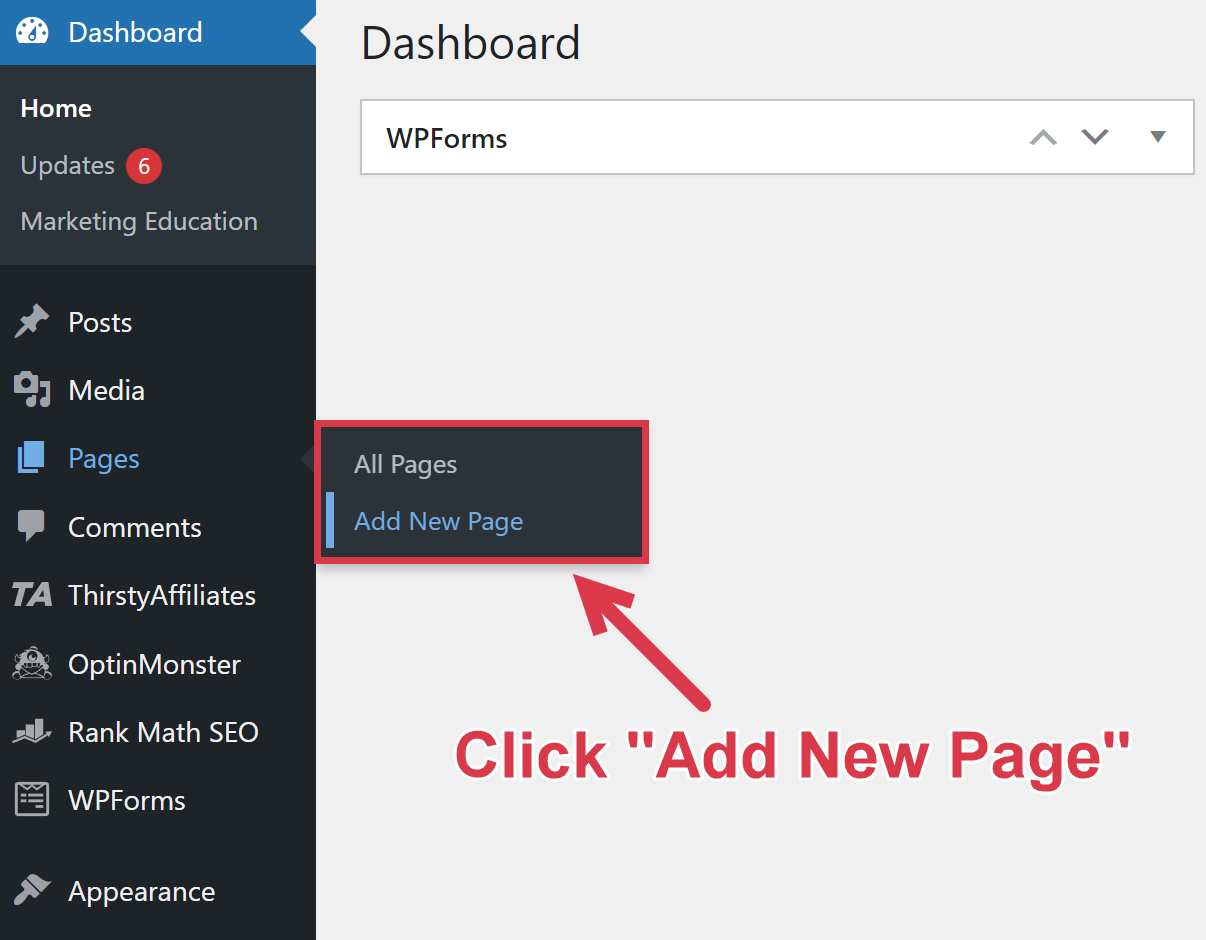
8 Start Creating Content
Finally, it’s time to create engaging and informative content for your lifestyle blog.
But before you write your first post, I want to share a fundamental strategy to ensure your blog thrives.
Keyword-focused content is the cornerstone of any successful blog. By targeting specific lifestyle keywords, you can get your articles to rank on search engines like Google when someone types in a given query, driving traffic to your website.
Start by identifying relevant keywords that people are typing into the search engines.
You might think you’d want to go for the keywords that are getting the most searches, but that’s not the best approach. High-traffic keywords have high competition from large, established websites, and your new lifestyle blog will have trouble ranking.
The trick is to find keywords with a balance of decent monthly search volume and low competition.
Ahrefs Keyword Explorer is a great resource for helping you find these golden nuggets and gain a competitive edge. For instance, when I put “sustainable living” into Ahrefs Keyword Explorer, I get the following keywords and search metrics:
| Keyword | Search Volume | Keyword Difficulty |
|---|---|---|
| Green living room | 2.5K | 22 |
| Sustainable living innovations | 350 | 1 |
| Green living room ideas | 1.2K | 22 |
| Green living room walls | 150 | 22 |
| Self-sustainable living | 200 | 12 |
| sustainable living center | 60 | 13 |
| Sustainable living communities | 90 | 10 |
With these insights, you can brainstorm intriguing blog post ideas that people want to read, such as:
- 7 Innovative Sustainable Living Ideas
- The Definition of Sustainable Living: What It Means and Why It Matters
- 25 Eco-Friendly Lifestyle Hacks for Sustainable Living
- Self-Sustainable Living: How to Live Off the Grid and Thrive
Once you come up with 10 titles for your blog, it’s time to write the content.
Here are some tips for writing successful lifestyle blog posts that resonate with your audience:
- Understand the search intent. Consider why users might search for your chosen keyword. Tailor your content to address their specific queries or needs effectively.
- Stay on topic. Keep your content focused on the chosen keyword. Avoid veering into unrelated tangents that might dilute the article’s impact.
- Write for the reader. Is the post for lifestyle enthusiasts, eco-conscious individuals, or wellness seekers? Reflect on your target audience and customize your tone and content depth accordingly.
- Leverage visual storytelling. Given the visual nature of lifestyle content, use high-quality images and videos to complement your narratives. Whether it’s fashion, travel, or home decor, visual elements can significantly enhance the appeal of your posts.
- Highlight trends. Stay abreast of current trends in your niche and incorporate them into your content.
- Offer practical tips. Readers often seek actionable advice in lifestyle blogs. Include step-by-step guides, DIY projects, or practical tips that readers can easily implement.
- Engage with authenticity. Share your genuine experiences and thoughts. Authenticity resonates with readers and helps build a loyal following. Be honest about your successes and challenges in the lifestyle realm.
- Regularly update content. Lifestyle trends can change rapidly. Regularly update your posts to keep them relevant and informative. This practice also helps with SEO.
- Be mindful of copyright laws. Only use media files from authorized sources. Practice fair use to avoid legal issues.
Above all, remember this one rule: Be more informative and engaging than what you find in competing lifestyle blogs. Consistently providing valuable content will improve your search ranking over time.
9 Promote Your Lifestyle Blog
Focusing on search engine optimization will naturally drive traffic to your blog, but you can reach a wider audience faster by promoting your blog.
Here are some strategies to consider for getting the word out:
- Participate in local events. Consider setting up a booth at a local event, such as a health fair or craft market. Community engagement can build local connections, draw a local readership, and inspire new blog post ideas.
- Collaborate with local influencers. Partner with local influencers in your specific lifestyle niche. For example, a fitness lifestyle blogger can collaborate with local trainers or wellness coaches. You can work together to create special content or offer to write a sponsored post featuring their business or expertise.
- Host in-person workshops. Hosting contests or giveaways that align with your lifestyle niche can rapidly increase your blog’s visibility and engagement. Collaborate with brands for sponsored prizes, making it a win-win for both parties.
- Hold contests or giveaways. Create lifestyle challenges tailored to your local community. For instance, if you’re a lifestyle blogger who encourages healthy eating, organize a local “30-day clean eating challenge” and promote it on your blog.
- Optimize for Pinterest. Since Pinterest is a major traffic driver for lifestyle content, ensure your blog posts include high-quality, pinnable images and optimize your Pinterest profile to draw more visitors to your blog.
Remember, authenticity and value are key when promoting your blog. Engage with your audience genuinely, and they’ll be more likely to become loyal readers and followers.
10 Monetize Your Lifestyle Blog
Now that your lifestyle blog has a growing audience, it’s time to explore monetization strategies.
Here are three effective methods to make money blogging:
Affiliate Marketing
Affiliate marketing involves promoting niche-related products or services on your blog.
Why It’s Great: It allows you to recommend valuable products or services to your audience while earning a commission. It’s a win-win scenario for you and your readers.
How to Get Started: Learn the ins and outs of how to start affiliate marketing and read our list of the best lifestyle affiliate programs.
Display Ads
Display ads involve placing advertisements on your lifestyle blog. You earn revenue when visitors view or click on these ads.
Why It’s Great: It allows you to monetize your lifestyle blog without requiring your readers to make any purchases.
How to Get Started: The easiest way to start with display ads is to join an ad network. Beginners should use Ezoic, as it’s easy to set up and pays more than Google AdSense.
Alternatively, you can also explore direct sponsorships within the lifestyle niche. Usually, sponsored posts allow for more control and potentially higher profits.
Selling Your Own Products
Create ebooks, online courses, merchandise, or any offerings catering to your readers’ interests.
Why It’s Great: It allows you to offer unique, valuable products to your readers. In turn, it helps build a dedicated fanbase and foster stronger connections.
How to Get Started: To manage memberships and exclusive content, consider using WordPress plugins like MemberPress. Platforms like Etsy are perfect for selling physical goods, and Teachable is an ideal choice for creating and selling courses.
👉 If you want to increase your ability to make money blogging, be sure to reference our detailed guide on how to monetize a blog.
Summing Up
Starting a lifestyle blog is an exhilarating venture with both personal and financial benefits.
But remember, the steps mentioned are just the tip of the iceberg. The digital landscape is vast and ever-changing, and to truly thrive, continuous learning is key.
Having walked this path and achieved significant success, we understand the challenges and pitfalls that new bloggers face. That’s why we’ve designed a specialized free training.
This training will unveil 7 game-changing strategies that can boost your blog’s growth by an impressive 83%.
If you want to make your lifestyle blog a roaring success, this is the next step.
FAQ
How Much Do Lifestyle Bloggers Make?
Lifestyle bloggers make as much as $45,000 annually, with some top earners making over $40,000 per month. How much lifestyle bloggers make varies widely based on niche traffic, traffic, and monetization. High traffic is key, typically requiring 100,000+ monthly sessions for full-time income. Revenue sources include advertising, brand collaborations, sponsored content, affiliate promotions, and product sales.
What Should a Lifestyle Blog Include?
A lifestyle blog should include interesting, engaging, and informative content to the readers. Share personal experiences or tips on fashion, beauty, fitness, relationships, or other topics related to your niche. Keep content fresh by experimenting with different categories and conducting keyword research for in-demand topics.
